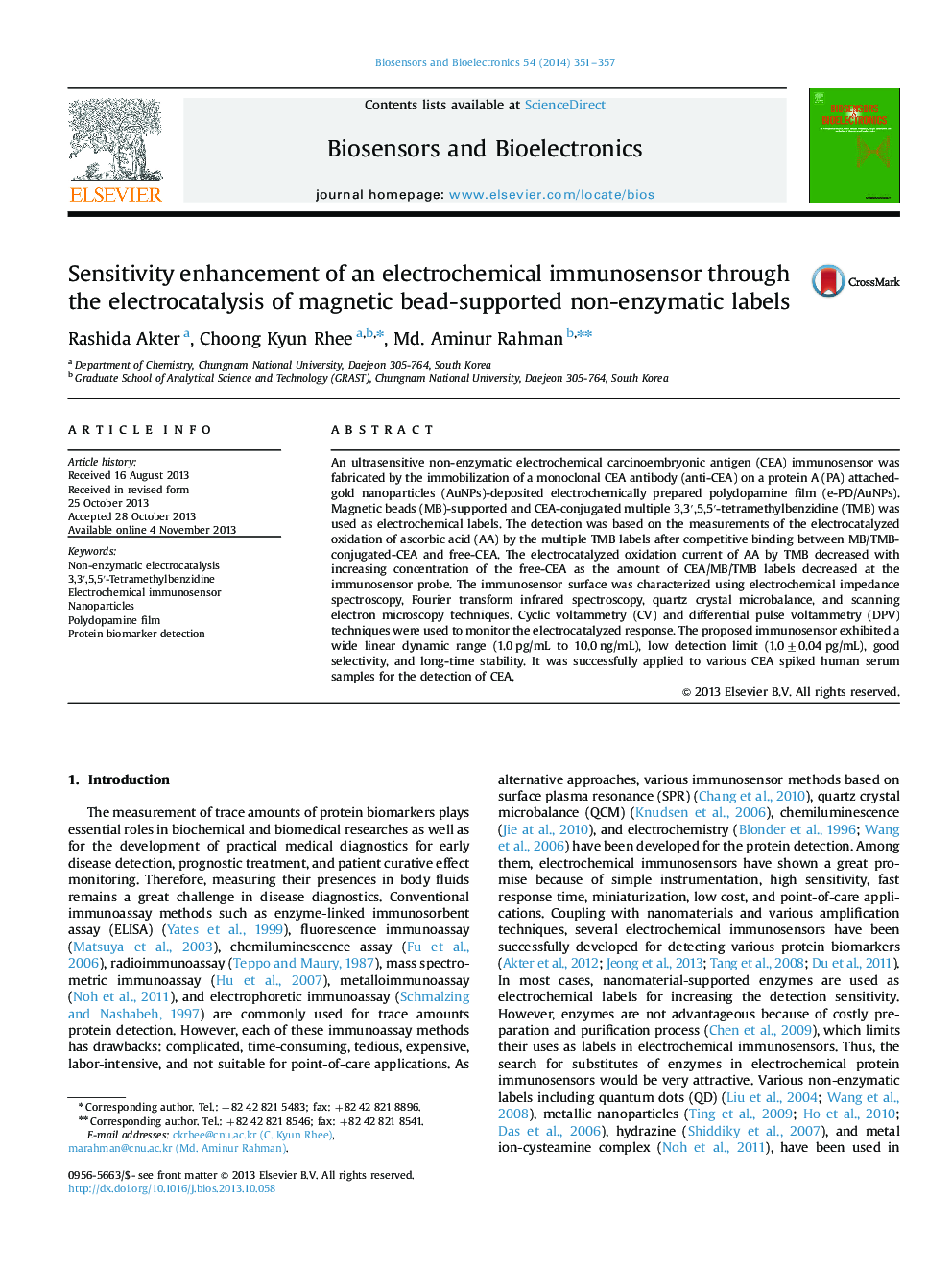| Article ID | Journal | Published Year | Pages | File Type |
|---|---|---|---|---|
| 7233680 | Biosensors and Bioelectronics | 2014 | 7 Pages |
Abstract
An ultrasensitive non-enzymatic electrochemical carcinoembryonic antigen (CEA) immunosensor was fabricated by the immobilization of a monoclonal CEA antibody (anti-CEA) on a protein A (PA) attached-gold nanoparticles (AuNPs)-deposited electrochemically prepared polydopamine film (e-PD/AuNPs). Magnetic beads (MB)-supported and CEA-conjugated multiple 3,3â²,5,5â²-tetramethylbenzidine (TMB) was used as electrochemical labels. The detection was based on the measurements of the electrocatalyzed oxidation of ascorbic acid (AA) by the multiple TMB labels after competitive binding between MB/TMB-conjugated-CEA and free-CEA. The electrocatalyzed oxidation current of AA by TMB decreased with increasing concentration of the free-CEA as the amount of CEA/MB/TMB labels decreased at the immunosensor probe. The immunosensor surface was characterized using electrochemical impedance spectroscopy, Fourier transform infrared spectroscopy, quartz crystal microbalance, and scanning electron microscopy techniques. Cyclic voltammetry (CV) and differential pulse voltammetry (DPV) techniques were used to monitor the electrocatalyzed response. The proposed immunosensor exhibited a wide linear dynamic range (1.0 pg/mL to 10.0 ng/mL), low detection limit (1.0±0.04 pg/mL), good selectivity, and long-time stability. It was successfully applied to various CEA spiked human serum samples for the detection of CEA.
Related Topics
Physical Sciences and Engineering
Chemistry
Analytical Chemistry
Authors
Rashida Akter, Choong Kyun Rhee, Md. Aminur Rahman,
